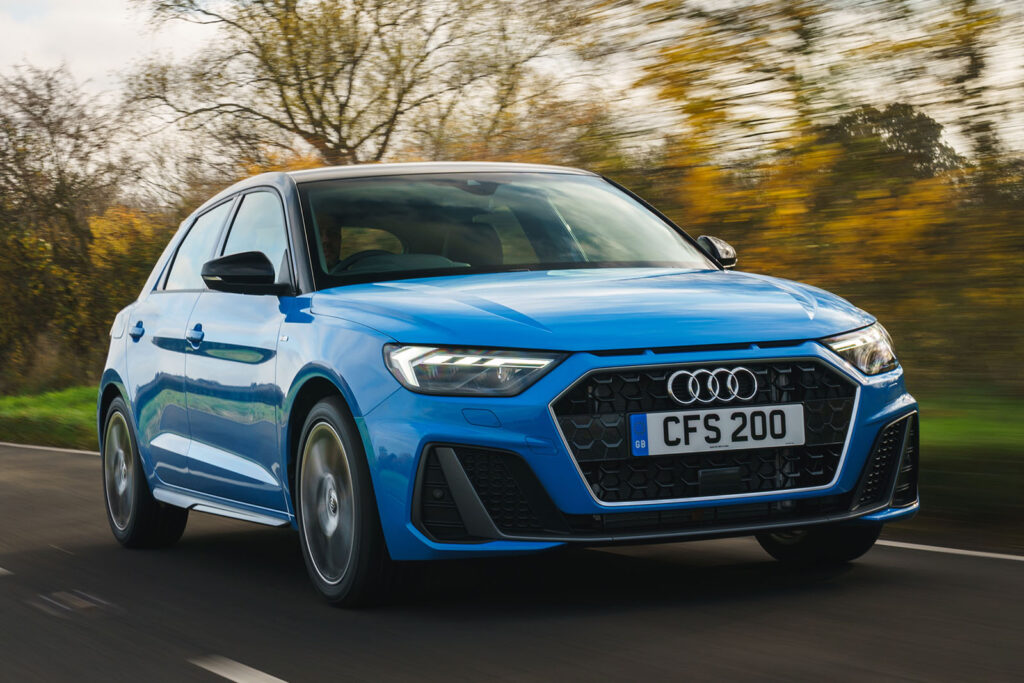While Audi has made an effort to differentiate the A1’s cabin from that of its Volkswagen Polo and Seat Ibiza cousins by employing a slightly more tasteful palette of trim materials and switchgear, that relationship hasn’t been entirely masked. Sure, it might exude more in the way of immediate opulence on first acquaintance, but closer inspection reveals several surfaces and finishes that make it feel like the budget option. Coarse, sometimes flimsy feeling plastics that reek of cost-cutting make its VW Group DNA readily identifiable.
That being said, platform-sharing means an element of sameness is inevitable, and you get more visual interest with every box you tick on the spec sheet – as is the way with a German machine. Top-specification cars, with their aluminium trim inlays, ambient lighting and leather seats, make a more convincing play of its upmarket aspirations than the lower-rung models do.
All variants of the A1 come with a 10.25in digital instrument cluster, as well as an 8.8in colour touchscreen that incorporates basic infotainment features such as Bluetooth, DAB radio, voice control and USB connectivity. Strangely, Audi’s native satellite navigation system is not fitted as standard, however all cars come with Apple CarPlay and Android Auto.
Fitment of the optional Technology Pack grants you a larger 10.1in touchscreen, wireless phone charging and an embedded sim card for 4G internet access. It’s integrated cleanly into the surrounding dash structure and, framed by attractive gloss black plastic, lends the smallest hints of Audi big-car technological sophistication.
Graphically speaking, both the infotainment screen and the Virtual Cockpit are very impressive indeed, operating smoothly and without much in the way of lag. In terms of ergonomics, the touchscreen is simple to interact with when stationary, but the loss of the rotary controller used to operate earlier versions of Audi’s infotainment software means on-the-move adjustments are a bit trickier, because you have to prod a specific point on a touchscreen.
At the foot of the touchscreen sits – praise be – a row of physical dials for the heating and air conditioning. Beneath that are more buttons to change the driving modes and to turn off the traction control. There’s also a rotary knob to adjust the radio volume, and the steering wheel is littered with physical controls. Not only is the A1’s reliance on buttons a welcome relief for drivers looking for ease of use, but they are extremely tactile to use and hold.
Despite this and the fact that the A1’s interior generally looks smart, it fails to truly differentiate itself from its VW Group siblings and justify its elevated price. That it is around £3000 more expensive than a Seat Ibiza and Skoda Fabia – both of which share engines with the A1 – isn’t easy to overlook.
However, of greater concern is the competition from Mini. It might be around £1000 more expensive, but its upmarket interior is one of a kind to look at and feel – and makes the Audi’s look both outdated and cheap. And while it is only a gripe, we would have expected to see a front armrest/storage cubby included as standard – especially given the – cheaper – Polo offers one across the range.
While you’d be able to squeeze two adults into the Audi’s second row in relative comfort, according to our tape measure its typical rear leg room figure of 640mm is some 50mm less than that of the Polo. The A1’s 335-litre boot is also 20 litres smaller than the Polo’s, according to our measurements, though it does, at least, outdo the Mini’s 210-litre effort by a significant margin.


